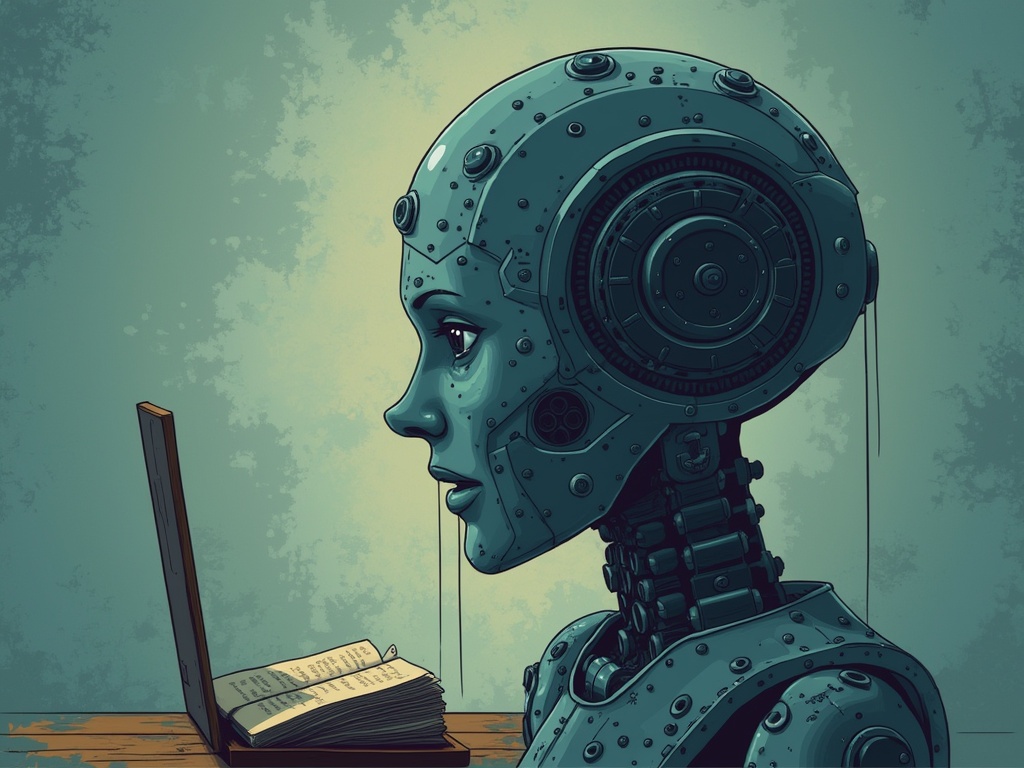AI tools have revolutionized the way writers approach creative blocks by providing on-demand inspiration and practical assistance for generating fresh ideas. Understanding how to overcome writer’s block using artificial intelligence can transform frustrating creative standstills into productive writing sessions through strategic implementation of AI-powered tools and techniques.
Key Takeaways
- Root causes of writer’s block include perfectionism, disorganized routines, and information overwhelm
- AI can generate immediate breakthroughs through quick-start methods and expansion techniques
- Different writing genres benefit from specialized AI tools designed for specific creative challenges
- A balanced hybrid approach maintains authentic voice while leveraging AI capabilities
- Both free and premium AI options offer valuable assistance depending on project needs
Understanding the Root Causes of Writer’s Block
Creative paralysis often stems from deeply ingrained habits that sabotage productivity. Perfectionism creates impossible standards that prevent writers from getting words on the page, while procrastination habits delay the writing process indefinitely. Before seeking writer’s block help, understanding these psychological barriers is essential.
Disorganized writing routines frequently contribute to creative blockages. Without a structured approach, writers find themselves staring at blank screens instead of developing content. Additionally, information overwhelm occurs when excessive research becomes a substitute for actual writing, creating a paradoxical situation where more information leads to less output.
AI analytics tools can identify optimal writing conditions by analyzing your productivity patterns. These tools track when you produce your best work, helping establish routines that maximize creative flow and minimize resistance. By pinpointing peak performance times, AI helps create conditions where writer’s block is less likely to occur.
Practical AI Techniques for Immediate Breakthroughs
The Quick-Start Method offers immediate relief from creative paralysis. By feeding ChatGPT even the roughest ideas, you can generate tailored writing prompts that spark inspiration. This technique works particularly well when you have a general topic but struggle with specific angles or opening sentences.
For deeper exploration, the Expansion Technique transforms single concepts into numerous perspectives. Input one central idea into an AI as a co-author, and it can instantly generate 100 different angles, questions, or related topics. This approach is invaluable for content creators who need to produce varied material on similar themes.
Content adaptation across platforms becomes seamless with AI assistance. Tools like Buffer analyze platform-specific engagement patterns and help tailor your writing accordingly. Whether adjusting tone for LinkedIn’s professional audience or creating punchier content for TikTok, these tools ensure your message resonates on each platform.
A/B testing content versions with Anyword allows data-driven decisions about which approaches connect best with readers. Instead of guessing what works, you can generate multiple versions and use AI to predict which ones will achieve higher engagement, saving time while maximizing impact.
Specialized AI Tools for Different Writing Challenges
Fiction writers face unique creative hurdles that specialized AI can help overcome. Sudowrite offers plot suggestions, character development options, and narrative expansions when imagination falters. When writing interactive stories, these tools provide alternative storylines and character motivations that might not have occurred to you.
Academic writers benefit from tools like QuillBot and Yomu AI that summarize complex research and suggest logical argument structures. These applications help organize dense information into coherent frameworks, particularly valuable when synthesizing multiple sources or structuring lengthy papers.
Business writers can streamline corporate communications with HubSpot Breeze ($15/month), which maintains consistent brand voice while generating various content types. From press releases to internal communications, this tool ensures professional messaging while reducing the time investment required.
Social media content creators appreciate Buffer’s platform-specific tone adjustments that optimize messaging across different networks. The same core content can be automatically adjusted for LinkedIn’s professional audience or TikTok’s conversational style, ensuring appropriate engagement on each platform.
Implementation Framework: From Stuck to Flowing
I’ve found the 3-Step Process—input, expand, refine—provides a reliable framework for using AI to overcome creative blocks. First, input your basic concept or keywords into your chosen AI tool. Next, let the AI expand these ideas into multiple options. Finally, refine the generated content to match your voice and quality standards.
Fiction-specific approaches focus on character development and plot progression. When storylines stall, how AI is changing the way we write stories becomes apparent as these tools can generate character backstories, motivations, and unexpected plot twists that reignite narrative momentum.
For content creators concerned with search visibility, AI tools offer keyword analysis and optimization suggestions. These applications identify high-value terms and recommend strategic placement to improve search rankings while maintaining natural-sounding text that engages human readers.
Focus enhancement tools eliminate digital distractions during writing sessions. From website blockers to AI-powered writing environments that adapt to your productivity patterns, these applications create optimal conditions for sustained creative output.
Hybrid AI-Human Workflows
Finding the sweet spot between AI assistance and human creativity represents the ideal approach to writer’s block. I recommend using AI for initial ideation and structural frameworks while preserving your unique voice and perspective for the final content. This balanced workflow maximizes productivity without sacrificing authenticity.
Quality control protocols prevent AI-generated content from feeling formulaic or generic. By establishing editing checkpoints that focus on voice consistency, emotional resonance, and original insights, you maintain distinctive writing that connects with readers while benefiting from AI efficiency.
Ethical considerations must guide AI implementation in creative work. Transparency about AI usage, especially in professional contexts, maintains trust with audiences. Additionally, being mindful of potential biases in AI outputs helps ensure fair representation in your content.
Many professional writers now combine AI outlining with manual drafting. The random story generator AI provides initial structures and ideas, while human writers add nuance, emotional depth, and unique perspectives that current AI cannot replicate. This collaboration produces higher quality work in less time.
Cost-Benefit Analysis and Tool Selection
Free AI options offer substantial value for many writing challenges. Basic versions of tools like ChatGPT can generate random story generator ideas and overcome simple blocks, while premium subscriptions provide advanced features for specialized needs or professional requirements.
Matching tools to projects ensures maximum effectiveness. Fiction writers benefit from narrative-focused applications like NovelAI, while business writers may find more value in tools like Jasper that specialize in marketing content. Selecting the right AI assistant for your specific genre maximizes its impact on your workflow.
Measuring AI’s return on investment involves tracking both time saved and quality improvements. If an AI tool reduces your writing time by 30% while maintaining or enhancing quality, it’s providing clear value. Keeping productivity metrics helps justify subscription costs and refine your tool selection.
Future-proofing your process requires staying informed about emerging AI writing technologies. As these tools evolve rapidly, 7 essential tips for overcoming writer’s block continue to incorporate new AI capabilities. Regularly experimenting with new applications ensures you benefit from advancing capabilities in the AI writing space.
AI tools have revolutionized how writers overcome creative blocks by providing on-demand inspiration through practical techniques and specialized tools. The article explores how different AI applications can help various writers—from fiction authors to business communicators—break through mental barriers while maintaining their authentic voice. It presents a balanced hybrid approach that leverages AI for ideation and structure while preserving human creativity for final content development.
| Key Points | Details |
|---|---|
| Root Causes | Perfectionism, disorganized routines, and information overwhelm commonly trigger writer’s block |
| Immediate Solutions | Quick-start methods and expansion techniques generate ideas and perspectives on demand |
| Specialized Tools | Different writing genres benefit from AI tools designed for specific creative challenges |
| Implementation | A 3-step process (input, expand, refine) helps writers move from stuck to flowing |
| Balanced Approach | Combining AI assistance with human creativity preserves authenticity while boosting productivity |



